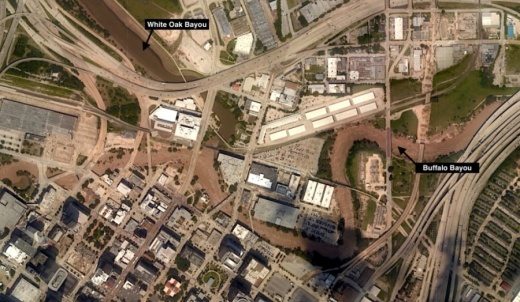“We’re all excited about this project that has forever been on the books; for 40 years people have been talking about this,” At-Large Council Member Sallie Alcorn said.
Houston officials are seeking a design consultant who will build out a more detailed view of the plan, which aims to reduce flood risk from White Oak and Buffalo bayous. A firm will likely be chosen by the end of 2020, said Laura Patino, the chief of staff for the Mayor’s Office of Recovery, told Houston City Council members in an Aug. 6 briefing.
The project would reroute White Oak Bayou along downtown, add an overflow channel east of downtown, and improve bridges and channels along Yale Street and Heights Boulevard to provide additional water conveyance capacity.
Other funding sources include $25 million from the Memorial Heights Redevelopment Authority and $20 million from the city, the Harris County Flood Control District and the Texas Department of Transportation.
Once the consultants are chosen, voted on by council and move forward with design, officials and residents will have a clearer picture of how the project changes the bayou’s flow through downtown, Patino said.
Preliminary designs indicate that Buffalo and White Oak bayous upstream from downtown will see a 2- to 5-foot reduction in depth during 100- and 500-year storms, she said.
Already a complex project requiring coordination from the federal government though Federal Emergency Management Agency and the Army Corps of Engineers in addition to state and local officials, the effort is also happening alongside the planned overhaul of I-45.
District H Council Member Karla Cisneros told Patino she wants more information through the design process about whether the I-45 project’s plan to relieve bottleneck flooding caused by the highway in Independence Heights will then release water more quickly into Buffalo Bayou and also potentially affect the East End downstream.
“I don’t want the solution to be to keep water in Independence Heights so it doesn’t drain further south; people there need to have dry land, too,” Cisneros said.
Patino said the design consultants will work with TxDOT to keep them aligned with each other.
The designs will also determine how much property acquisition will be necessary, which plays a significant role in determining how quickly the project can be completed.
An original press release associated with the project stated it could be completed as soon as 2022.
Matt Dulin contributed to this report.





